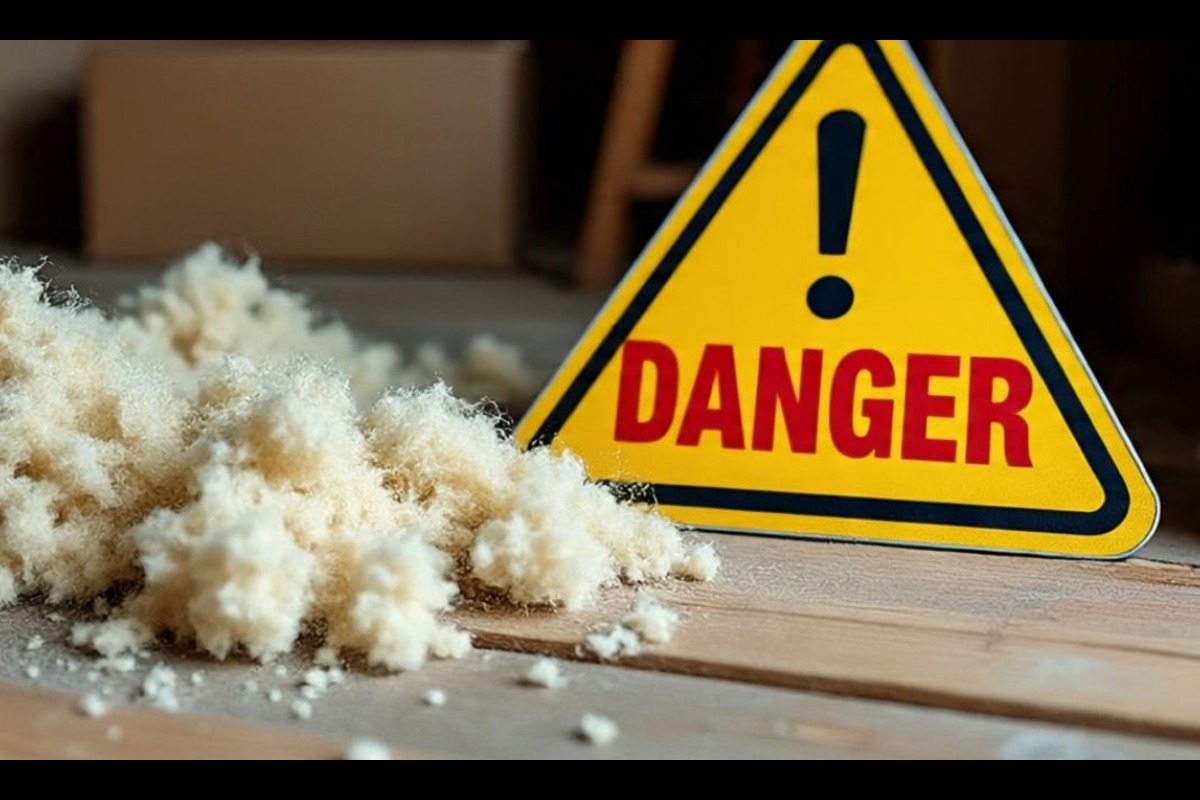The term “Asbestlint fluid” may not be commonly heard, but it plays a crucial role in conversations about health and safety. This material often harbors hidden risks that can have serious consequences for anyone exposed to it. Whether you’re renovating an old building or simply refurbishing your home, understanding asbestos fluid is crucial. This article will explain what asbestos fluid is, its potential hazards, how to safely identify it, and what steps you can take to protect yourself and others. Don’t endanger your health through ignorance; learn about asbestos fluid today!
What is Asbestlint fluid and what is it used for?
Asbestlint fluid is an asbestos-containing material widely used in various industrial and construction applications. This flexible tape is often used for insulation, fire protection, and sealing joints in pipes and ducts. Thanks to its unique properties, it can withstand high temperatures.
Due to its excellent heat resistance, asbestos fluid is often used in older buildings and machinery. It can prevent heat loss while protecting against fires. However, the risks associated with asbestos exposure have increased scrutiny of these materials.
While some industries still use asbestos due to its effectiveness, many are seeking safer alternatives. Awareness of the dangers of asbestos is steadily growing among professionals and homeowners.You may also be interested in: NS Mainframe
Health Concerns Associated with Asbestlint Exposure
Asbestos exposure poses serious health risks that should not be overlooked. Asbestos fibers can become airborne and be inhaled, causing long-term respiratory problems. Diseases such as asbestosis, lung cancer, and mesothelioma are commonly associated with asbestos exposure.
The danger lies in the latent period; symptoms can take years or even decades to appear. This delay makes it difficult for those affected to link their health problems to previous exposures.
In addition, vulnerable groups, such as construction workers or residents of older buildings, are at greater risk. Awareness of these potential hazards is crucial to promoting safety and preventive measures against this hidden threat.
Common Sources of Asbestlint
Asbestlint is commonly found in various building materials that were commonly used before the 1980s. It can be found in insulation, roof tiles, and shingles. These products can still be present in older residential and commercial buildings and pose a hidden risk.
Another common source of asbestos is automotive parts such as brake pads and clutches. Although many manufacturers have discontinued the use of asbestos, older vehicles may still contain these components.
Renovating or demolishing asbestos-containing buildings can release harmful fibers into the air. Caution is advised when working in buildings constructed during the peak of asbestos use. Always proceed with caution to minimize potential exposure risks.
Safe Asbestos Detection
Safe asbestos detection requires a cautious approach. First, avoid handling materials that may contain asbestos. If asbestos is suspected, you should hire experienced asbestos inspectors. They have the tools and experience to identify hazardous substances without exposure.
Visual inspections can sometimes reveal signs of deterioration or damage, but this method is not foolproof. Many homes and buildings built before the 1990s may be at risk. When handling potentially asbestos-containing waste, safety should always take priority over repair.
If sampling is necessary, trained technicians use specialized sampling equipment to minimize the release of fibers into the air. This ensures safer analysis in a controlled environment without risking exposure during the process. Your health is paramount; don’t take unnecessary risks when detecting asbestos.
Handling and Preventing Future Exposure
Handling Asbestlint requires extreme caution. If Asbestlint is suspected, safety is paramount by avoiding direct contact. Always wear protective equipment such as masks and gloves to minimize the risk of inhalation.
Consider using professionals trained in asbestos removal for safe handling. They have the necessary experience in handling potentially hazardous materials. Homemade solutions can increase exposure.
To avoid future exposure to asbestos, regularly inspect old buildings or materials that may contain asbestos. Implementing a rigorous maintenance program is essential to identify risks early. Educating yourself and those around you about the dangers of asbestos will significantly improve safety awareness in your community.
Legal Notices and Regulations
Asbestlint is subject to strict legal regulations due to the health risks it poses. Various international and local laws regulate the handling and disposal of asbestlint-containing materials. It is important to familiarize yourself with these guidelines to ensure compliance.
In many countries, the use of asbestlint in construction is banned or severely restricted. Companies that continue to work with asbestos must comply with certain safety and reporting regulations. Violations can result in heavy fines or even criminal prosecution.
Employers must provide training on how to handle asbestos safely. Workers must be aware of their rights regarding exposure and the protective measures provided by law. Understanding these legal aspects helps effectively minimize risks while creating a safer environment.
Importance of Asbestlint Awareness
Asbestos awareness is critical for public safety. Many people are unaware that asbestos can be hidden in old buildings and materials. This lack of awareness can lead to significant health risks.
The potential dangers of asbestos exposure should not be underestimated. Even minimal exposure can lead to serious respiratory illnesses such as lung cancer and mesothelioma. Public education about these risks is essential.
Knowing where asbestos may be present helps people take proactive measures. Through education, communities can better protect themselves from accidental exposure during renovations or repairs. Knowledge enables owners, workers, and contractors to prioritize safety in all situations involving old materials.
Modern Asbestlint Management Solutions
Modern asbestos management solutions focus on safety and efficiency. Innovative technologies now make it possible to detect, monitor, and safely remove asbestos fibers in buildings. These advances allow professionals to accurately assess the risk level.
Encapsulation methods are becoming increasingly popular. This process seals the material so that harmful fibers do not become airborne. By using special coatings, owners can minimize risks without requiring immediate removal.
Regular worker training also plays a critical role in modern asbestos management strategies. Ensuring teams are well-trained in handling and managing asbestos fibers is essential for maintaining safe environments. As awareness increases, these practices help minimize the health risks associated with this hazardous material.
What to do with Asbestlint fibers?
If you discover asbestos fibers in your environment, it is essential to act immediately. First, avoid moving the material. Asbestos fibers can easily become airborne and pose serious health risks. Ensure no one enters the area until a professional inspection has been conducted.
Next, contact a licensed asbestos removal company to conduct an inspection. They have the experience and equipment to safely assess the situation and determine if the material needs to be removed. Do not attempt to remove the asbestos fibers yourself, as this could increase the risk of exposure.
Document your findings and all actions taken. Records can be essential for legal requirements or future safety assessments. Acting quickly not only protects you but also ensures a safer environment for everyone around you.You may also be interested.
How to Prevent the Presence of Asbestlint Fibers in the Future
Preventing the presence of Asbestlint fibers in the future begins with proper education. Owners and contractors should know where asbestos fibers may be present and the risks they pose. Attending asbestos safety workshops or training courses can significantly increase awareness.
Regular inspections of older buildings are essential. If you live in a building constructed before 2000, consider hiring professionals to assess the potential presence of asbestos-containing materials, including asbestos stone. Documenting these assessments helps track changes over time.
Be sure to follow strict safety protocols during renovations and repairs. Wear protective clothing when working in areas where the presence of asbestos stone is suspected. Implementing best practices during maintenance protects everyone from harmful exposure and ensures compliance with local regulations.
The Value of Asbestlint in Modern Safety Practices
Understanding the Asbestlint associated risks is critical in today’s safety landscape. Asbestlint is used in a variety of industries, so awareness is essential for workers and employers. The potential hazards it poses cannot be overlooked, especially regarding the health consequences of exposure.
Implementing effective asbestos management strategies not only minimizes risks but also promotes a culture of safety in the workplace. Training programs focused on the identification and safe handling of asbestos can empower individuals to act proactively.
Furthermore, regulatory compliance ensures regulatory compliance while protecting public health. Using modern solutions helps companies anticipate the challenges associated with asbestos materials.
Asbestos awareness and education are important components of a comprehensive safety plan. They protect lives and improve the work environment. By prioritizing these practices, we contribute positively to the well-being of our communities.








